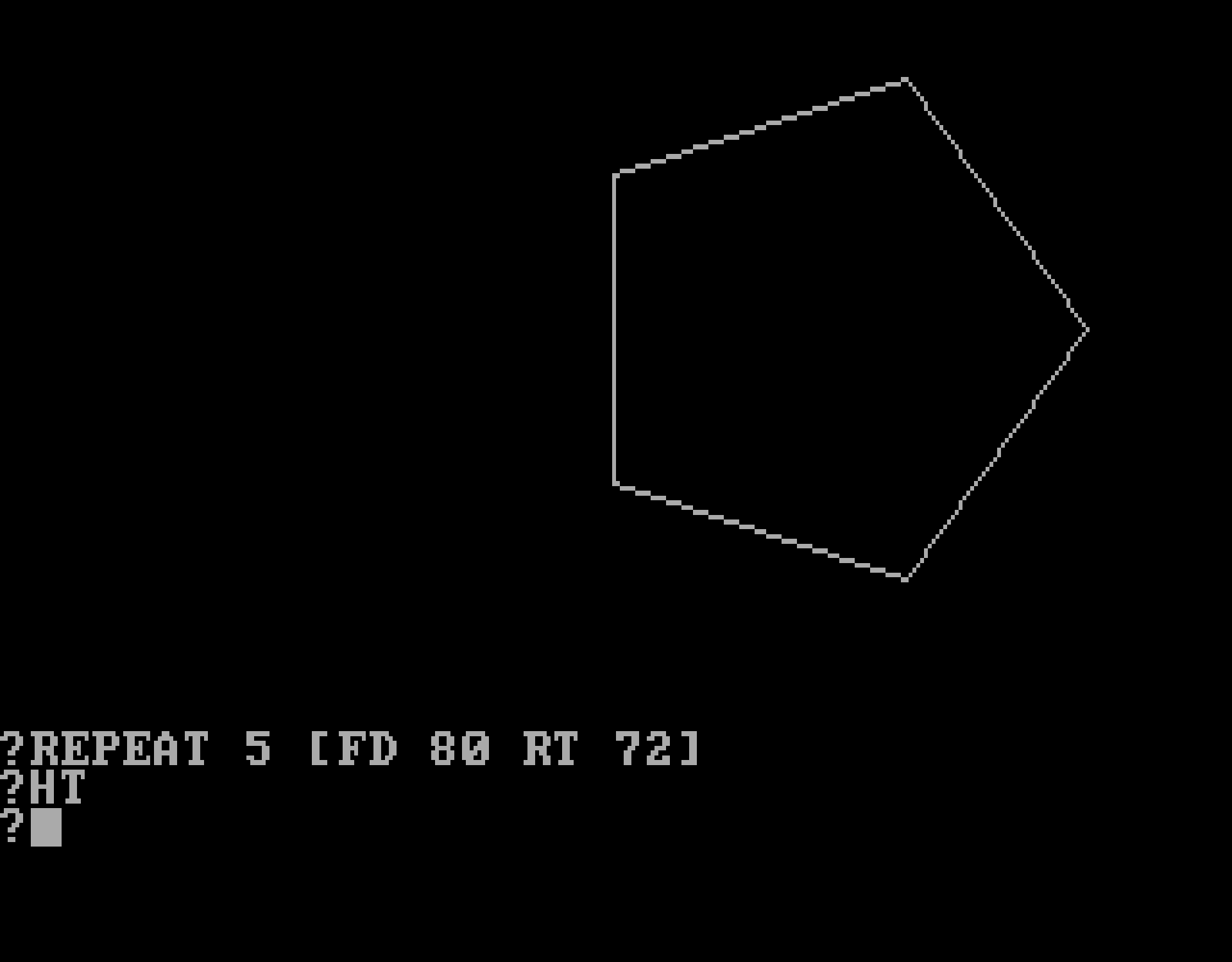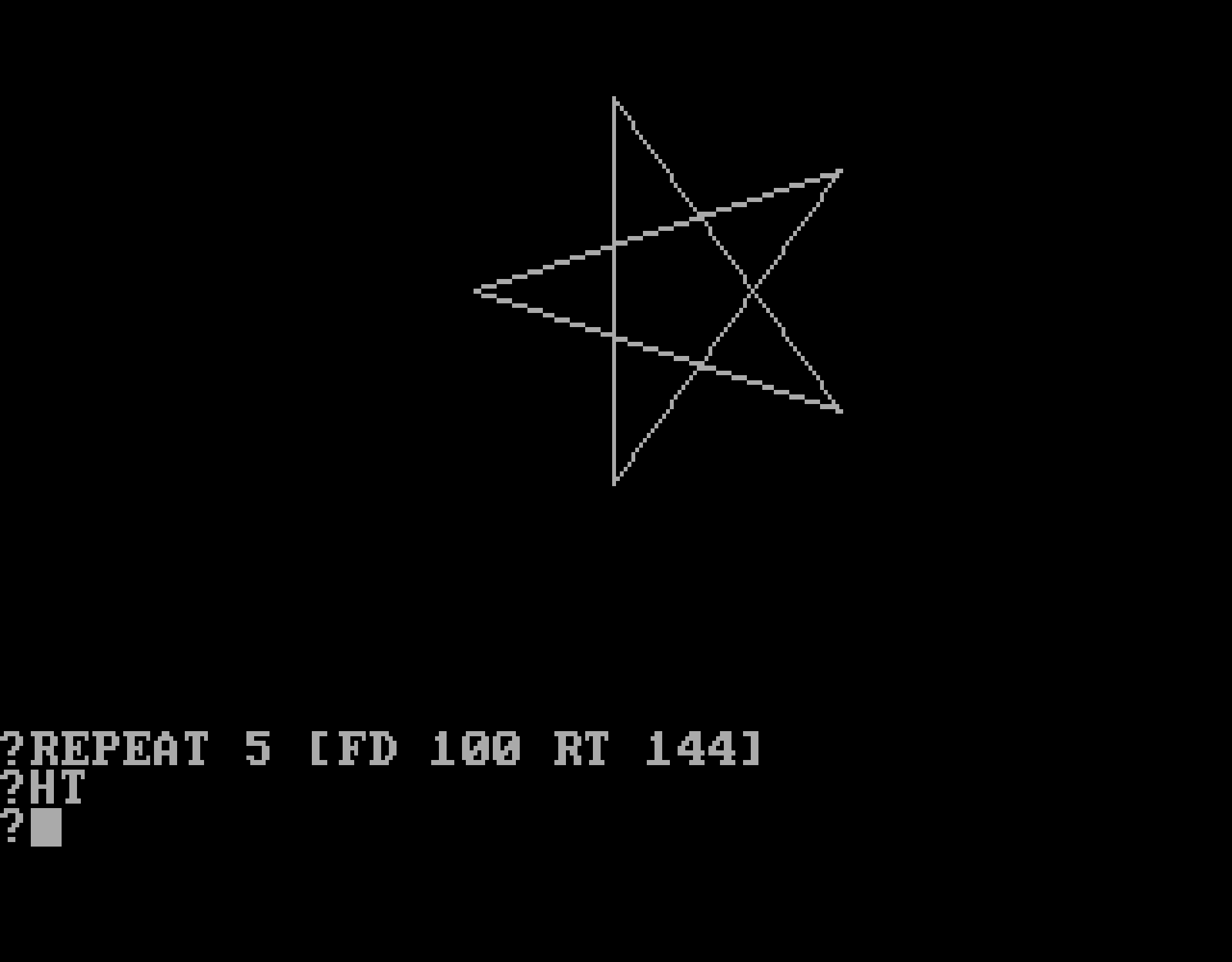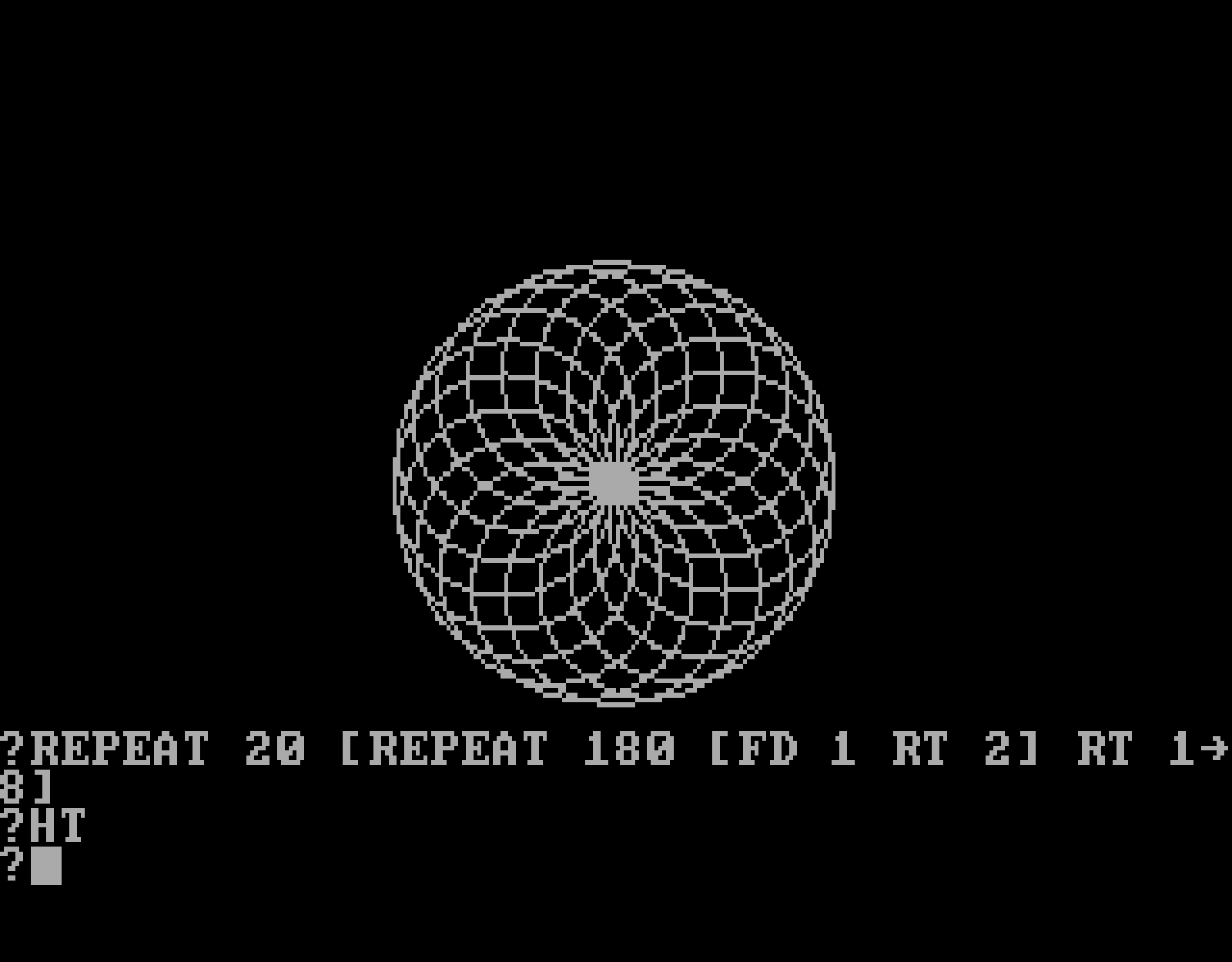FD 100
I learnt how to write computer programs in IBM/LCSI PC Logo. That was back in the year 1992. Computers were much simpler in those days. The ones in our school were IBM PC compatible computers with mostly monochrome displays. The ability to boot a computer using a 5¼-inch floppy disk containing MS-DOS, load a Logo interpreter and then write some programs without any distraction had its own charm that I find missing from modern day computing.
The First Line of Code
The first line of code I ever wrote was:
FD 100Here is how the output looks:

That is the "hello, world" of turtle graphics in Logo. That simple line of code changed my world. I could make stuff happen in an otherwise mostly blank monochrome CRT display. Until then I had seen CRTs in televisions where I had very little control on what I see on the screen. But now, I had control! The turtle became my toy and I could make it draw anything on a 320 × 250 canvas.
Polygons
With a little knowledge of geometry, one could draw polygons. Often the first polygon one would learn to draw was a square. It involves making the turtle walk forward 100 steps, then turn right 90° and repeat these two operations four times in a loop. Here is the code:
REPEAT 4 [FD 100 RT 90]Here is the output:

Similarly, one could draw other polygons. The only thing my nine-year-old self then needed to understand was that after drawing an entire polygon, the turtle is back to its original position having completed one full turn. Therefore to draw a polygon with \( n \) sides, the turtle needs to turn by \( 360 / n \) degrees after drawing each side. Drawing a pentagon is as simple as:
REPEAT 5 [FD 80 RT 72]Here is the output:

The same approach works for drawing a regular five-pointed star too. The only new thing we need to consider here is that as the turtle draws the shape, it makes two full turns. Therefore, it must turn by \( 720 / 5 \) degrees after drawing each side. Here is the code:
REPEAT 5 [FD 100 RT 144]Here is the output:

I remember feeling uneasy about the lopsided appearance of the polygons above and then trying to please my sense of aesthetics by centring these polygons horizontally on the screen and having them stand firmly on an imaginary horizontal line so that they look balanced. I won't include the code and output for that on this page for the sake of brevity of this post but here are links to some screenshots I have kept that show a few of several ways to do it: logo-square-centre.png, logo-pentagon-centre.png and logo-star-centre.png.
Circles
Going from polygons to circles was especially fun. Here is the first piece of code one would normally write to learn to draw a circle:
REPEAT 360 [FD 1 RT 1]Here is the output:

Now precisely speaking, this is not exactly a circle. This is a triacosiahexeacontagon, i.e. a 360-gon. It is an approximation of a circle with 360 very short line segments. Nevertheless it was enough to get a young child who had just begun to learn using the computer excited about programming. It showed me how control flow could be used elegantly to express complex ideas in a simple expression. By the way, here is one way to centre that circle horizontally on the screen: logo-circle-centre.png.
Soon after learning to draw a circle, I learnt to write this:
REPEAT 20 [REPEAT 180 [FD 1 RT 2] RT 18]This code draws 20 overlapping circles. The output looks like this:

A Lasting Effect
There is a lot more to Logo than turtle graphics. Logo gave me a brief taste of functional programming even though back then I did not know the term "functional programming". I discovered the same simplicity and elegance in Lisp about 15 years later. After all, Logo can be thought of as a dialect of Lisp without parentheses that controls a turtle.
At an impressionable age of nine, reading and writing code like this and using simple arithmetic, geometry, logic and code to manipulate a two-dimensional world had a lasting effect on me. Back in those days, I used to find joy in sharing some of my interesting Logo programs with my teachers and friends. I like to believe that my passion for software engineering as well as my love for writing code, sharing code and open source development are a result of coming across these beautiful code examples early in my life.
FD 100—it is a tiny piece of code, but it changed my world!